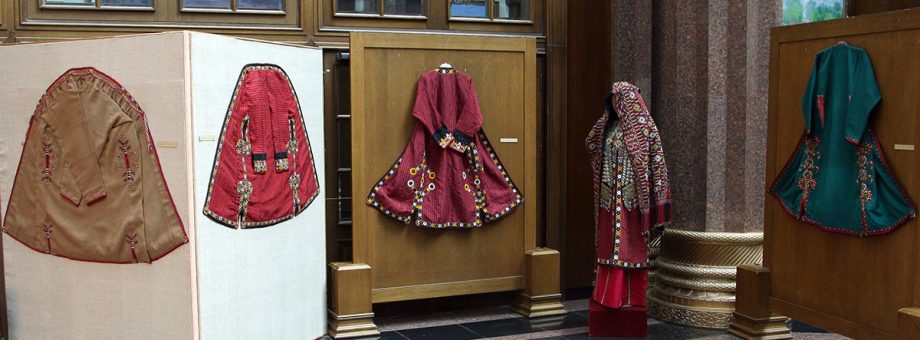The national robe as a part of the culture of the Turkmen people

An exhibition of national robes is being held at the State Museum of the State Cultural Center of Turkmenistan. Its purpose is to acquaint museum visitors with valuable exhibits—ancient robes preserved in the museum’s storerooms. Visitors are presented with men’s, women’s, and children’s robes from the late 19th to early 20th centuries, characteristic of various regions of the country.

Over the past millennia, thanks to careful preservation of the past, the Turkmen people have maintained their national traditions and mentality. Continuity is manifested not only in customs but also in the clothing of the Turkmen.

The national costume is an integral part of the material culture, encompassing the rich historical experience of the people. Perfected over centuries, Turkmen clothing developed progressively, in harmony with the history of the people.

When creating fabrics for sewing festive and everyday clothing, our ancestors manually prepared raw materials from agricultural products. Silk was woven from silkworm cocoons, cotton fabric was produced from cotton, and camel and sheep wool was used for making woolen fabrics.

The robe is considered a symbol of honor and respect in national clothing. There is a popular saying: “The robe is a large part of beauty.” Since the robe was the finishing piece of outerwear, it was given special importance. Robes of specific types were sewn for each age group.

The exhibition features women’s robes decorated with hand embroidery, cloth robes trimmed with patterns, robes with embroidery and silver ornaments, silver buttons, and necklaces. Also on display are velvet and warm robes decorated with pieces of fabric and tassels, yellow robes with red and green stripes, Khiva robes padded with cotton, and silk robes. There are also striped and red robes for men, semi-silk and Khiva robes, and robes made of sheep’s and camel’s wool.

The State Museum offers an opportunity to study in detail the various types of national clothing handed down from our ancestors. In this regard, the exhibition of robes from the late 19th to early 20th centuries arouses special interest among ethnographers, historians, artists, and fashion designers.



 NEWS
NEWS